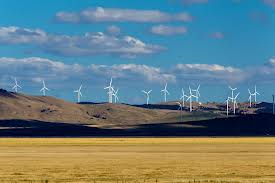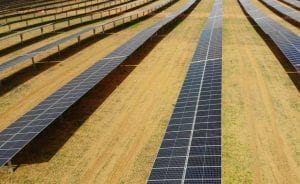A University of Queensland study has added weight to the argument that wind energy helps to lower power prices, finding that Australian states with operational wind farms have experienced a reduction in average annual wholesale electricity prices ranging from 25 to 39 per cent.
The study, released today, investigates the impact of wind generation on wholesale electricity prices, power dispatch patterns, carbon emissions and transmission network adequacy within the NEM.
It found that the those states with the largest number of operational wind farms experienced the greatest reductions in average annual power prices, the stand-outs being South Australia and Victoria, which experienced reductions of between 24.9 and 38.9 per cent and 14.5 to 21.6 per cent from 2010-2012.
The report also found that the reductions in average annual prices also increased over time, reflecting the expansion in semi-scheduled wind generation in South Australia, Victoria and New South Wales over 2010-2012. For the NEM, reductions in average wholesale prices were particularly evident over this period, ranging from 9.1-11.9 per cent.
As we reported in 2012, wind energy has had a huge impact on the existing electricity infrastructure in South Australia, accounting for more than 22 per cent of capacity and 20 per cent of supply over the 2011-12 period – even higher over shorter periods – and at times supplied more than 80 per cent of the state’s energy needs. (In 2013, wind energy accounted for 27 per cent of total generation)
The University of Queensland study reveals that as well as reducing average wholesale electricity prices, wind generation tended to reduce price volatility in the high wind penetration states of Victoria, South Australia and Tasmania.
For the interval 2010-2012, reductions in average price volatility ranged from 7.1-30.1 per cent in Victorian, to 12.8-45.5 per cent in South Australia, and 11.3-22.3 per cent in Tasmania.
The report says wind generation also led to significant displacement of gas-fired production, particularly in Victoria, where they reductions in total gas-fired production ranged from 5.1 to 11.7 per cent due largely to the displacement of an open cycle gas turbine plant. South Australia also experienced noticeable reductions in output from gas-fired plant, says the report, of between 3.3 to 7.0 per cent.
Reductions in use of gas peaking plant generation were the most notable in the report, ranging from 15.0-54.12 per cent in Victoria, and 13.6-38.8 per cent in South Australia.
This effect could be observed in the recent generation portfolio of Origin Energy, which, as we reported in February, showed how the company’s biggest base load generator, Eraring Energy which it bought in the past year, operated at a capacity factor of just 35 per cent, while its only owned and operational wind farm, Cullerin Range, operated at 44 per cent.
As this and other data from South Australia shows, the addition of wind energy into the mix means back-up gas generators are now needed even less than when their sole requirement was to fill the peaks that coal and other base load could not.
New data, released at the start of May, suggests that Australia in the month of April reached its record level of output for wind energy – 4.6 per cent of total generation from the National Electricity Market. This corresponds with data from the latest CEDEX report, showing a steady fall in wholesale electricity prices in all mainland NEM states since the middle of 2013.









